Best Earth Images of the Week - March 23, 2012

Rhinos, Scorpions, Whales
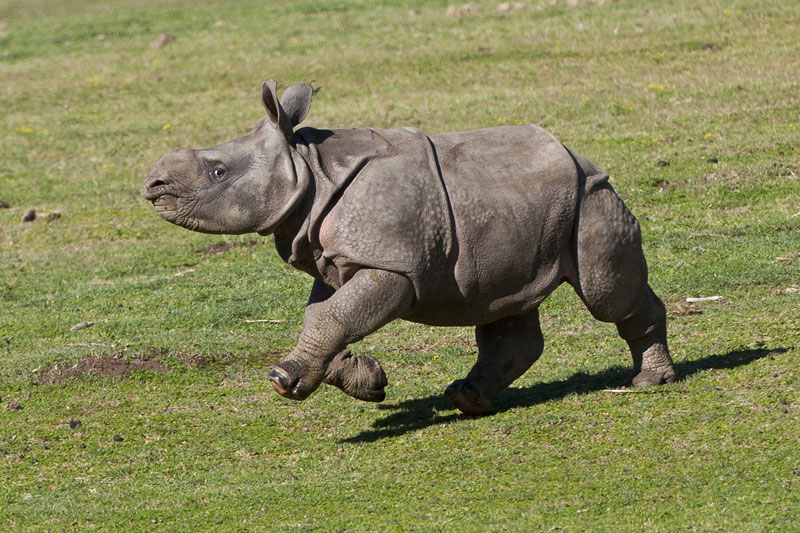
A new rhino calf, strange homes for scorpions and beautiful lights of Dubai. A few of our favorites for this week.
Check these out.
Scorpion Surprises
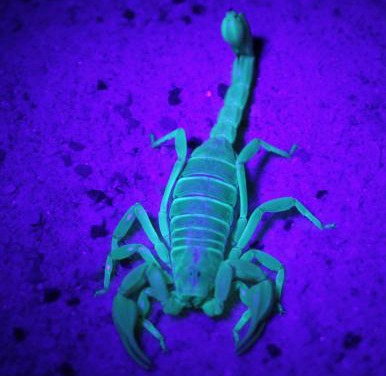
Researchers have announced the discovery of a tiny scorpion in Death Valley National Park, an unusual location, they said, since it lies hundreds of miles north of the known habitat of the newfound species' closest relatives.
Searchers equipped with ultraviolet flashlights spotted a single male specimen near a pile of rocks during a nighttime survey adult scorpions give off an eerie glow in ultraviolet light.
The dainty predatory arthropod is only 0.6 inches long (16 millimeters) about the length of a thumbnail.
[Full Story: Teeny Scorpion Discovered in Surprising Spot]
Rhino Calf Debut

A two-month-old rhino calf at the San Diego Safari Park made her debut this week under blue skies that came out after a rainstorm swept through.
Charlees, whose name is Hindi for Charlie, was born on Jan. 20 to mother Alta. She is the 61st greater one-horned rhino born at the Safari Park since 1975, making the Park the foremost breeding facility in the world for this species.
[Full Story: Rhino Calf Debuts at San Diego Zoo]
Ice-Choked Bering Sea
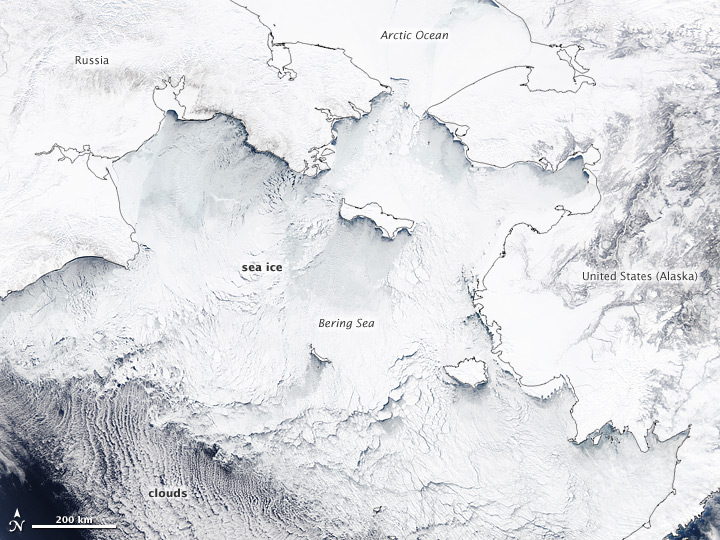
Sea ice forms in the Bering Sea and other parts of the larger Arctic Ocean system every winter, but the winter of 2011-2012 has seen the second highest ice extent in the satellite record for the Bering Sea region, according to the National Snow and Ice Data Center (NSIDC).
The NSIDC reported that ice extent (or the area of the ocean covered by ice) in the Bering Sea for January was 562,000 square kilometers (217,000 square miles), at least 104,600 square km (40,400 square miles) above the 1979-2000 average. Though numbers were not released for February, the pattern persisted through to March.
[Full Story: Satellite Spies Ice-Choked Bering Sea]
Strong Tornadoes Hit Texas

A NOAA satellite spotted the line of powerful storms that ripped across south-central Texas last night (March 19), producing three tornadoes that left a path of destruction in their wake.
While officials were trying to assess the damage today, NASA produced a video based on images from the National Oceanic and Atmospheric Administration satellite.
Storm survey teams arrived at the site of splintered homes early this morning in Medina County, an area near San Antonio, in the aftermath of some of the most severe weather the south-central Texas region has seen in years, said Jon Zeitler, science and operations officer at the National Weather Service's Austin/San Antonio forecast office.
[Full Story: Satellite Sees 'Strongest Tornadoes in Years' Strike Texas]
An Incredible Journey
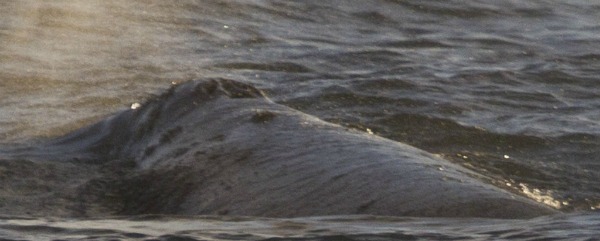
Scientists have tracked a critically endangered western gray whale from its native habitat in the chilly Pacific Ocean off Russia for thousands of miles to balmy lagoons off the coast of Mexico a first for the rare whales.
Now, the 9-year-old female dubbed Varvara, the Russian equivalent of Barbara is making her way back up the west coast of North America, and appears to be returning home.
On Friday (March 16), Varvara was near the Canadian border, and traveling about 100 miles (160 kilometers) a day.
[Full Story: Rare Russian Whale Tracked to Mexico, a First for Science]
Lights of Dubai

A bustling metropolis in the heart of the United Arab Emirates lights up the night in this photo taken by an astronaut aboard the International Space Station.
The city of Dubai is the largest metropolitan area in the emirate of the same name. The region's uniquely shaped island developments, framed by a bright lattice of orange lights, are clearly visible in this nighttime image taken from space on Feb. 22.
Dubai is a popular photographic target for astronauts aboard the International Space Station because of the artificial archipelagos located just offshore in the Persian Gulf, NASA officials said in a statement. These attention-grabbing features were intentionally built so that the full design is only visible from a vantage point looking straight down, such as an airplane or an orbiting outpost in space.
[Full Story: Dazzling City Lights of Dubai Seen From Space]
Get the world’s most fascinating discoveries delivered straight to your inbox.
Spring has Sprung

Many places around the United States are experiencing a record-breaking run of warm weather, but not everyone is embracing this year's early spring.
The no-jacket-required temperatures, along with a set of other complementary weather conditions, have sent trees into a flurry of pollen production, setting the stage for the scratchy throats, itchy eyes and achy noses that the allergy-afflicted among us know all too well.
On Weather Channel maps, large swaths of the country are shaded dark red the color code for "very high" tree pollen levels from the southeast to the Midwest to areas near the Rocky Mountains.
[Full Story: Achoo! Why Is The Pollen So Bad Right Now?]
Never Eat ... Green Ice?
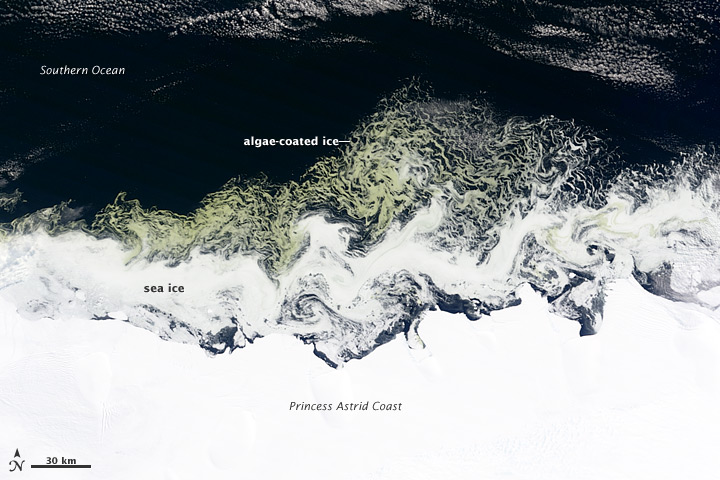
Late last month, a NASA satellite flying over East Antarctica spotted swirls of green off the Princess Astrid Coast that left experts wondering just what it was.
Such a pattern usually indicates a bloom of tiny plantlike organisms called phytoplankton, which form the base of the ocean food chain. Such blooms are common along the Antarctic coast, but typically form in early December, in the austral spring, not so late in the summer season, according to experts consulted by NASA.
"It doesn't look like a phytoplankton bloom to me," Stanford University marine biologist Kevin Arrigo, who led NASA's ICESCAPE expeditions to the Arctic in 2010 and 2011, told NASA. "The spatial pattern resembles the sea ice too closely. It looks suspiciously like green sea ice. Plus, it's very late for such a bloom in the Antarctic."
[Full Story: Mysterious Green Swirls Spotted Off Antarctic Coast]
Unique Flower Bloom

A rare and stinky corpse flower is blooming now at Cornell University, and those who are curious can watch, though sadly (or maybe happily) not smell, the spectacle on a live Web stream.
The Cornell corpse flower began blooming on Sunday (March 18) after weeks of watching.
Native to the equatorial rain forests of central Sumatra in western Indonesia, the corpse flower is technically known as an Indonesian titan arum (Amorphophallus titanum).
[Full Story: Watch Live: Stinky Corpse Flower Blooming]



